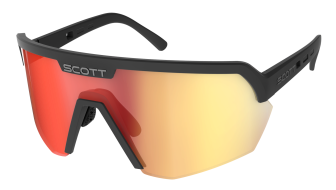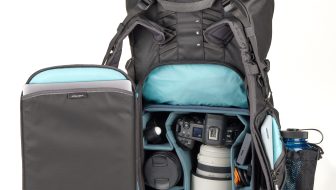The 2019 Gear Guide is on newsstands, and in many areas across the U.S. winter is in full swing. That means it’s time to buckle down and thing about proper bootfitting. And while there are certain variables like height and weight that naturally dictate which products testers gravitate toward, a proper fit is crucial in understanding the nuances of boot performance. That’s why we consult experts like Bob Egeland, aka Bob the Bootfitter, to make sure toes are happy.
While his profession might leave some feeling a bit squeamish, Egeland, a board-certified Pedorthist, is passionate about keeping people happy in their ski boots all day long. And finding a comfortable fit is his top priority, especially for backcountry skiers who don’t have the option to take a break in the lodge if toes start to tingle. We caught up with him to chat about how he approaches AT bootfitting and what his key strategies are to make sure every skier feels like Cinderella. Here’s what he had to say.

Bob Egeland at work during the 2017 Gear Test Week at Powder Mountain, Utah. [Photo] Matt Kiedaisch
Bob Egeland: I have worked in the outdoor footwear industry since I was 16. I worked for Vasque hiking boots for 25 years, and I became a board-certified Pedorthist about 14 years ago. Until recently, I worked out of Neptune Mountaineering, where I fitted boots for seven years. I now have an office north of Boulder where I do my own bootfitting. I also work with Masterfit as one of their sales managers, and I teach ski boot fitting and Masterfit University classes all over the U.S.
BCM: What is the primary challenge of AT bootfitting?
BE: I get deluged by people buying crossover boots from an alpine shop, and many alpine shops don’t know how to fit AT boots. The alpine boot industry is currently jumping on what I would call “walk mechanism,” and I think you need to differentiate a walk mechanism from a touring mechanism. A lot of the alpine boots have a lever you can flip up to go into walk mode, and that allows the boot cuff to go to vertical, but that isn’t good for touring because you can’t go farther rearward from vertical. When you’re skinning and you put that front leg forward, it has to go past that vertical 90 degrees. It is that range of motion I like to call that touring mode.
BCM: How does your work with Masterfit inform your AT bootfitting?
BE: In a Masterfit class, we teach the ABCs of bootfitting. Each letter is equally important. A is the proper shell size and environment. And that is really the key part. AT boots are very difficult, if not impossible, to stretch lengthwise. Some of the new ultralight boots that are made out of Grilamid are not stretchable at all because they tend to warp. So finding the proper shell size is the first key thing, and this is where the alpine shops often fail.
What I like to do is a shell fit with every person. When I shell fit someone I pull the liner out and have them in their lightweight ski sock. I then have them put their foot in the shell standing up so that their big toe is going to lightly touch the front of the boot. Then I put my fingers down the back of the boot, and I look for a centimeter-and-a-half of distance for a fit that would be good for both skinning and downhill skiing. If someone is more downhill-oriented, you can go a bit shorter that that. Then what I’ll do is have the person center their foot with equal toe space and equal heel space in the shell. I’ll ask them if their first and fifth metatarsal are touching the shell. If they are touching the shell, that boot may be too narrow for them, because we still need to get the liner in there.
BCM: Tell me about step B.
BE: Once we have done the shell fit then we can go to step B, which is stabilizing the foot with some sort of foot bed. There is not a single boot, alpine or AT that comes with a footbed that is worth a hoot. We tend to call them tracing templates, not footbeds. Stabilizing the foot is really important because if the foot is moving inside that boot, then heel lifters are going to be very common, and if there is rubbing on the fifth metatarsal head or what we jokingly call the “sixth toe,” that can irritate also. That is the B portion. This could be done with an over-the-counter footbed that works or a custom footbed if so desired.
BCM: And C?
BE: Step C is dealing with all of the padding, poking, punching and grinding. So many people come to me saying, “My heels are slipping,” and they demand L pads or C pads. And I say, “No, I need to stabilize your foot first.” Or, if someone comes to me for a sixth toe punch, I will not do that without the proper footbed, because if your foot elongates or “splays’ (expanding lengthwise and to the outside), you are going to bang the fifth metatarsal head.
If that foot is moving every stride, where do I punch that? If I punch it and the foot is moving in and out of that punch—ouch—that foot is going to hurt really badly. A lot of people don’t want to spend the money on a custom footbed, but a lot of the over-the-counter footbeds are made for hiking boots, not ski boots. They are not interfaced properly. When I build a custom footbed, there are two fits I strive for: One fit to the foot and one fit to the boot. Some over–the-counter footbeds have a hard plastic piece on the bottom and that is what most people try to put into an AT boot. Those almost create more problems.
A woman once came to me with the original Dynafit TLT5 boots, which were very narrow in the heel, and her heels were just getting annihilated. They were hamburger heels. She said, “I need to pad the heels.” I said, “No you don’t. Your liners are pregnant. The heel width of the footbed is so wide that it was predating open the liner.” So I was actually able to fit her with an over-the-counter footbed made by EZ Fit. Full disclosure, Masterfit and EZ Fit have a partnership, but that is what worked. Interfacing the footbed to the liner is one of the hardest things to do.
—
Find out more about Bob Egeland at boulderorthotics.com.










Related posts: